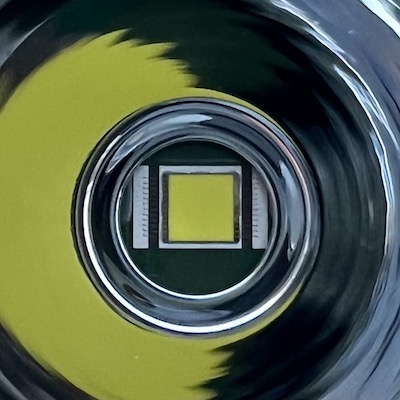Luminus SBT90.2
I got my hands on an SBT90.2 in the Emisar D1V2 kind of on a whim. I didn’t know too much about this emitter other than that it was large, expensive, and could throw out massive amounts of lumens.
I already had a few Noctigon KR1’s that I was happy with as pocket throwers in various colors, so I wanted something a bit different if I was going to get another small thrower. With the D1V2, I decided to go for max wow-factor of photon blasting lumens with the SBT90.2.
It didn’t disappoint.

Overview
- Lumen monster. 4000-5300 lumens to scare critters, neighbors, or any semblance of night (or any) vision from your eyeballs after you turbo yourself.
- Wide hotspot, much spill. All those lumens gotta go somewhere, and they gush out into a big bright hotspot and give a good useable spill.
- 70 CRI. Sure, this is a low, but, pshaw!, we don’t need no high CRI here. Get close enough and everything will ignite into a ball of red flame anyways.
- Green tint at lower levels. It’s not pretty, but again, I don’t care. Stop trying to ride your Ducati at low RPMs.
- 5700k CCT. I typically like my color temperatures on the warmer side, with 3500k being a sweet spot for practical use. But with this LED, I don’t care. Just give me lumens!
- Large die area. 3x3mm. When you’ve been in the flashlight hobby long enough to care about the size of your LEDs and how they look when you stare all day at them on your desk.
- Expensive. Sure, it’s no $500 flashlight, but the fact that you’re paying a premium for just an LED for the cost of another flashlight makes you start to wonder about your life choices and how you’ll justify not being able to afford your kid’s college tuition.
In the D1V2 (and KR1)
The Emisar D1V2 and Noctigon KR1 are, for the most part, the same host in terms of output and beam. They share the same drivers and reflectors, so these are thoughts from my experience with the D1V2 but apply equally to the KR1.
- ~4,000 lumens. This is so ridiculous in such a small host. Sure, it doesn’t last long (maybe 2 seconds?), but boy does it impress. Compare to the great W2 throwy emitter in the same host which outputs around 30% of this at ~1,300lm.
- ~100,000cd. Same as the W2.
- Paired with a Molicel P26A. Feed the power hungry LED faster.
- The FET driver in these hosts lets the SBT90.2 unleash itself.
- This thing gets hot fast!
- Cost for the SBT90.2 was $50. The D1V2 itself was $40!
Basically, this is hot rod that burns through batteries for a premium price. Low CRI. Not a pretty tint. Not really practical. It’s kind of stupid in a certain way. But y’know what? I still like it. It still wows me and puts a grin on my face when I blast it with a fresh battery in it. I’ll grab it for walking the pup when I need a compact light that’ll give me some throw when walking around dark suburban streets.
Other Hanklights
The SBT90.2 seems to be a lot more practical in larger hosts with more thermal mass to be able to handle how hot this emitter gets. These larger hosts with higher capacity batteries help make this power hungry emitter blast those lumens for a little but longer.
- Noctigon K1. 4,500 lumens. 420,000cd.
- Noctigon DM11. 4,500 lumens. 128,000cd.
- Noctigon DM1.12. Available only for the center channel with the same specs as the DM11. 4,500 lumens. 128,000cd.
- If you’re considering a larger host with similar (actually more) output but a little less throw, the Emisar D4SV2 with W2 emitters may be worth checking out. 4,900 lumens. 97,000cd.
Noctigon MCPCB
You can also purchase the Luminus SBT90.2 LED in Noctigon MCPCB and build your own tiny thrower.
- Flux bin SB: 2990-3200lm @9000mA
- Max current 18A
- 32mm diameter, 2mm thick
Other Applications
From the SBT90.2 Datasheet:
- Fiber-coupled illumination: endoscopy, machine vision, instrumentation.
- Architectural and Entertainment lighting - Narrow beam spotlights.
- Beacons
- Search lights
- Automotive after-market / Tuning spotlights
- Tactical portable lighting (Spelled: flashlight nerds?)
Additional Resources
- Luminus SBT-90-W Gen2 Datasheet
- r/flashlight: Subjective, Simple Guide to Popular LEDs
- Dave’s Tech Reviews: Big list of Luminus SBT90.2 flashlights
- BudgetLightForum: Luminus SBT-90 gen2 5700K tested
- r/flashlight: KR1 SBT90.2, the only time I will compromise on tint. 5000 lumens with 600 meters of throw while still being pocketable.
- Sky Lumen: Noctigon KR1vn
- Grizzly’s Reviews: Noctigon KR1 Review – The King of Pocket Throwers